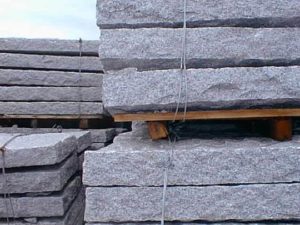CBP inspection of wood packaging; CBP photo
On September 25, the DHS Bureau of Customs and Border Protection (CBP) announced that beginning on November 1, the agency would no longer eschew penalizing importers of non-compliant wood packaging until that importer had accumulated five such interceptions in the course of a year.
Beginning November 1, “responsible parties with a documented WPM violation may be issued a penalty under Title 19 United States Code (USC) § 1595a(b) or under 19 USC § 1592.”
As readers of this blog might remember, I have frequently fulminated against the “five strikes” policy. The United States began full implementation of the international standard governing treatment of wood packaging (ISPM#15) 11 and ½ years ago. The U.S. and Canada began requiring China to treat its wood packaging nearly 18 years ago. Nevertheless, numerous shipments containing wood packaging that does not comply with the regulations continue to arrive at our borders – and to bring pests. As of February, only about 30 import shipments (out of nearly 21,000 shipments found to be in violation of ISPM#15 requirements) have received a financial penalty.
shipments of stone or tile are frequently supported by non-compliant wood packaging; photo (c) the Queen by right of Canada (CFIA)
In a blog I posted in February I described the continuing detections of pests in wood packaging. In summary, during Fiscal Years 2010 through 2016, CBP detected nearly 5,000 shipments of wood packaging that harbored a pest in a regulated taxonomic group. The APHIS interception database for the period FYs 2011 – 2016 contained 2,547 records for insect detections on wood packaging. The insects belonged to more than 20 families. A quarter were in the Cerambycid family; 11% were Buprestids. In a study of insect larvae removed from incoming wood packaging from the period April 2012 through August 2016, APHIS scientists evaluated 1,068 insects from 786 separate interceptions of non-compliant wood packaging. The wood packaging in all three datasets came from dozens of countries.
(Remember, the U.S. and Canada do not apply ISPM#15 to wood packaging moving between the two countries. Neither country inspects wood packaging from the other country at even the low rate of inspection applied to wood packaging coming from other countries – so we don’t know how many quarantine pests are moving in this high-volume trade.)
The Bureau of Customs’ action has partially fulfilled one of two recommendations that I made in the February blog. I applaud CBP’s action. However, neither CBP or APHIS has yet prohibited importers with records of repeat violations from using wood packaging – my second recommendation.
Note that the CBP decision applies Customs regulations; USDA has apparently not changed its policy of allowing importers to accumulate five (detected) violations in a calendar year before applying the civil penalties provided by the Plant Protection Act. Why?
We welcome comments that supplement or correct factual information, suggest new approaches, or promote thoughtful consideration. We post comments that disagree with us — but not those we judge to be not civil or inflammatory.
Posted by Faith Campbell

